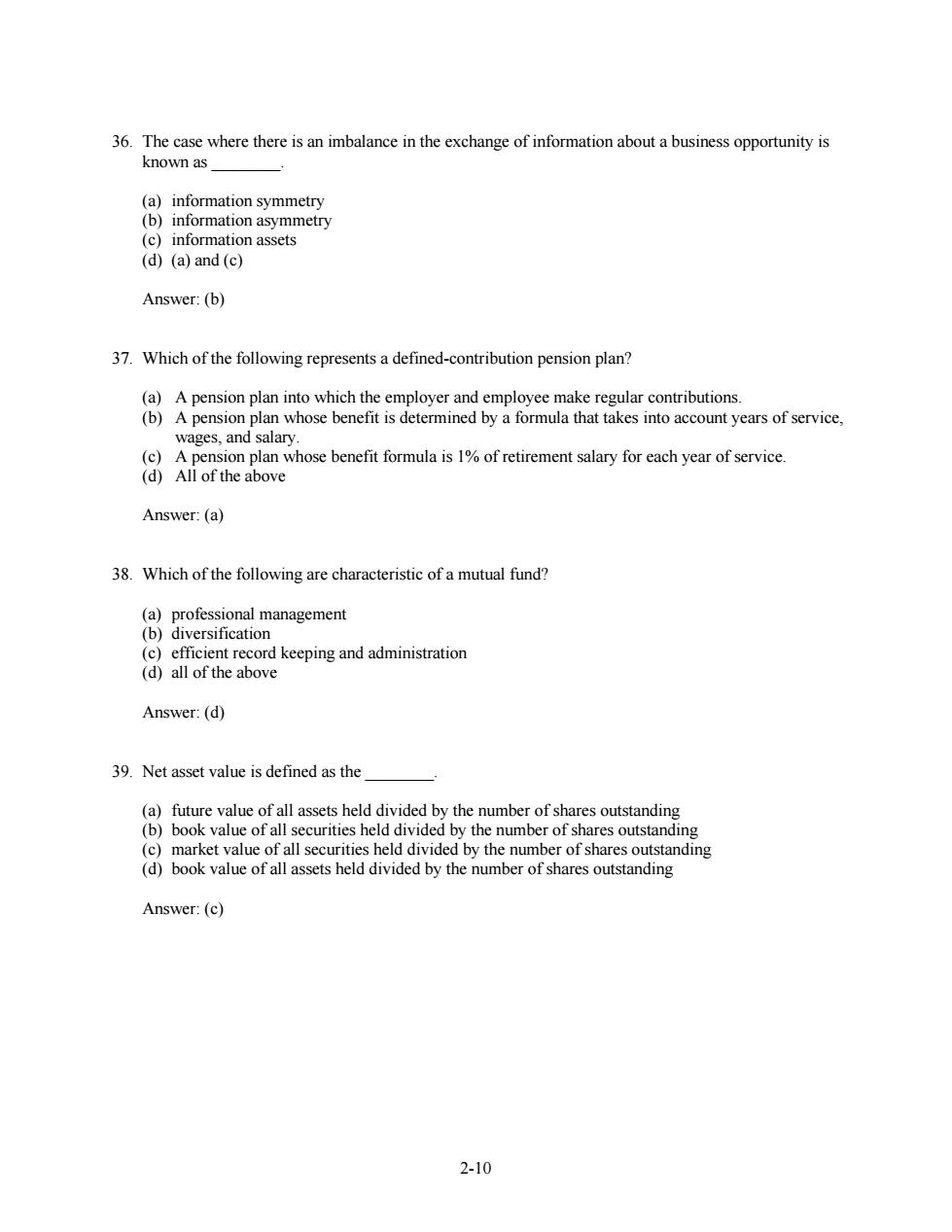正在加载图片...

36.The case where there is an imbalance in the exchange of information about a business opportunity is known as (a)information symmetry (b)information asymmetry (c)information assets (d)(a)and(c) Answer:(b) 37.Which of the following represents a defined-contribution pension plan? (a)A pension plan into which the employer and employee make regular contributions. (b)A pension plan whose benefit is determined by a formula that takes into account years of service, wages,and salary. (c)A pension plan whose benefit formula is 1%of retirement salary for each year of service. (d)All of the above Answer:(a) 38.Which of the following are characteristic of a mutual fund? (a)professional management (b)diversification (c)efficient record keeping and administration (d)all of the above Answer:(d) 39.Net asset value is defined as the (a)future value of all assets held divided by the number of shares outstanding (b)book value of all securities held divided by the number of shares outstanding (c)market value of all securities held divided by the number of shares outstanding (d)book value of all assets held divided by the number of shares outstanding Answer:(c) 2-102-10 36. The case where there is an imbalance in the exchange of information about a business opportunity is known as ________. (a) information symmetry (b) information asymmetry (c) information assets (d) (a) and (c) Answer: (b) 37. Which of the following represents a defined-contribution pension plan? (a) A pension plan into which the employer and employee make regular contributions. (b) A pension plan whose benefit is determined by a formula that takes into account years of service, wages, and salary. (c) A pension plan whose benefit formula is 1% of retirement salary for each year of service. (d) All of the above Answer: (a) 38. Which of the following are characteristic of a mutual fund? (a) professional management (b) diversification (c) efficient record keeping and administration (d) all of the above Answer: (d) 39. Net asset value is defined as the ________. (a) future value of all assets held divided by the number of shares outstanding (b) book value of all securities held divided by the number of shares outstanding (c) market value of all securities held divided by the number of shares outstanding (d) book value of all assets held divided by the number of shares outstanding Answer: (c)